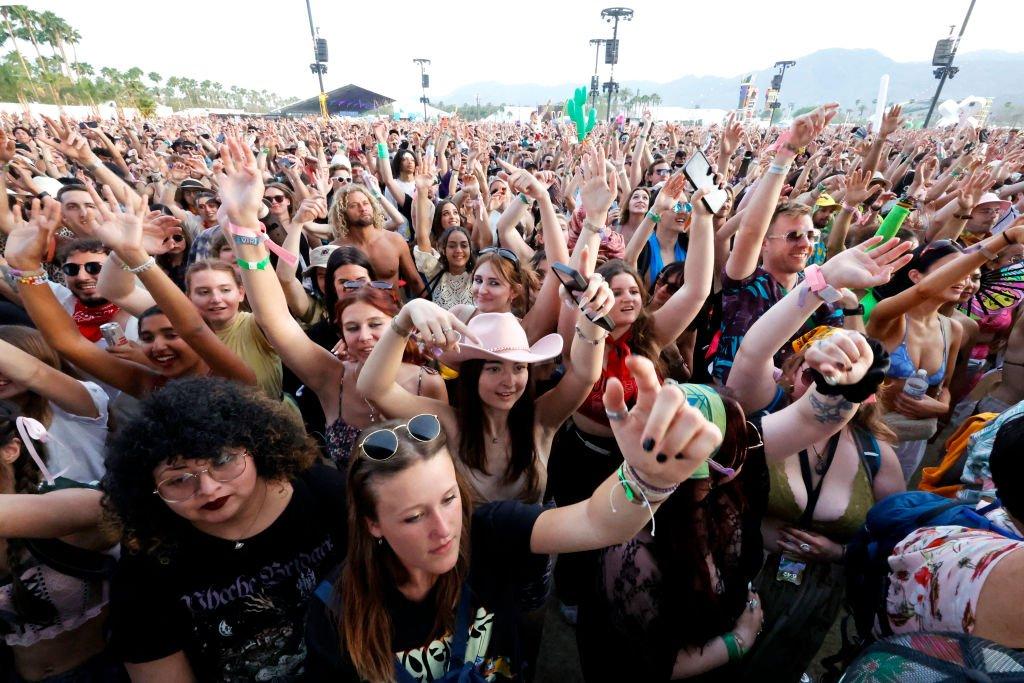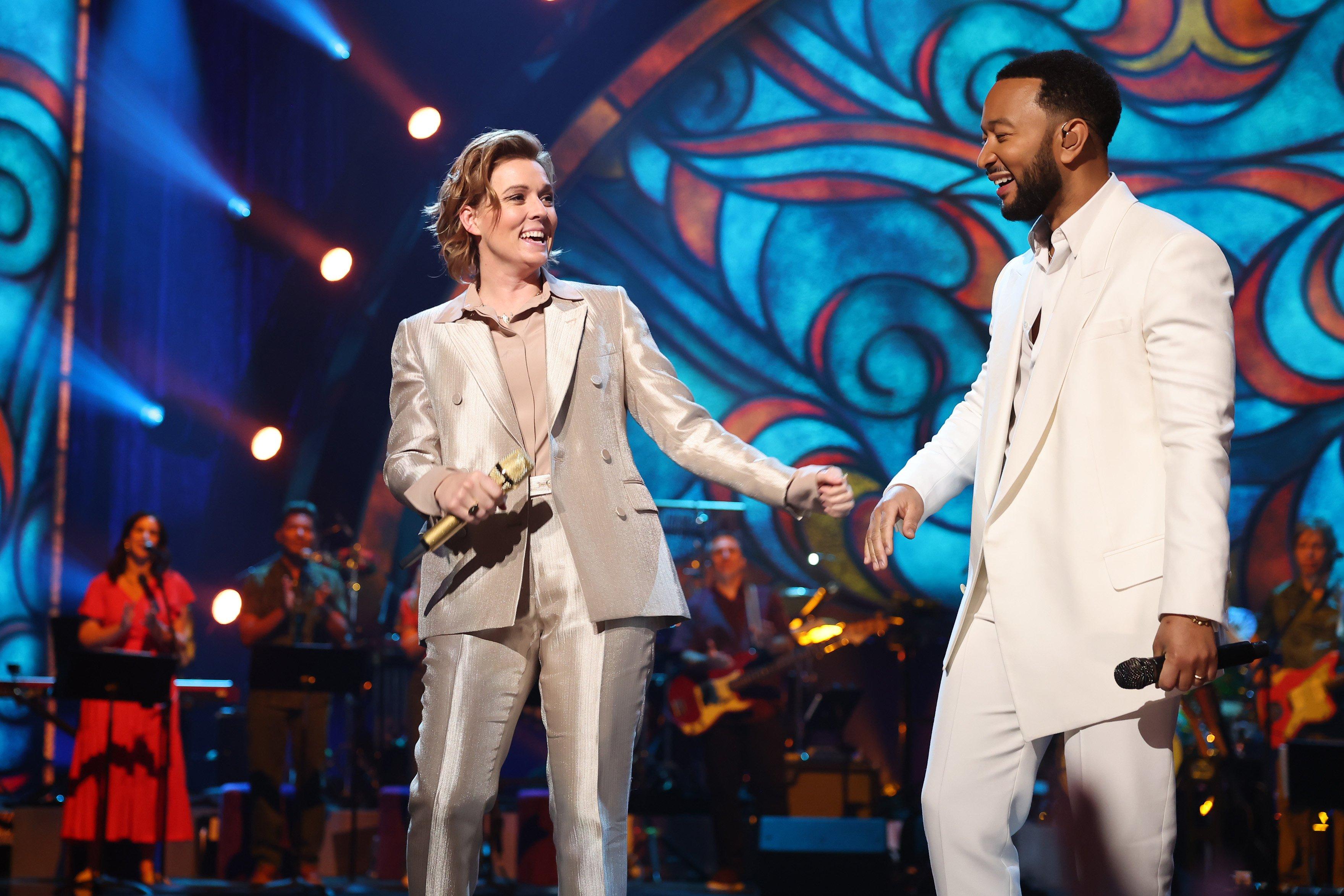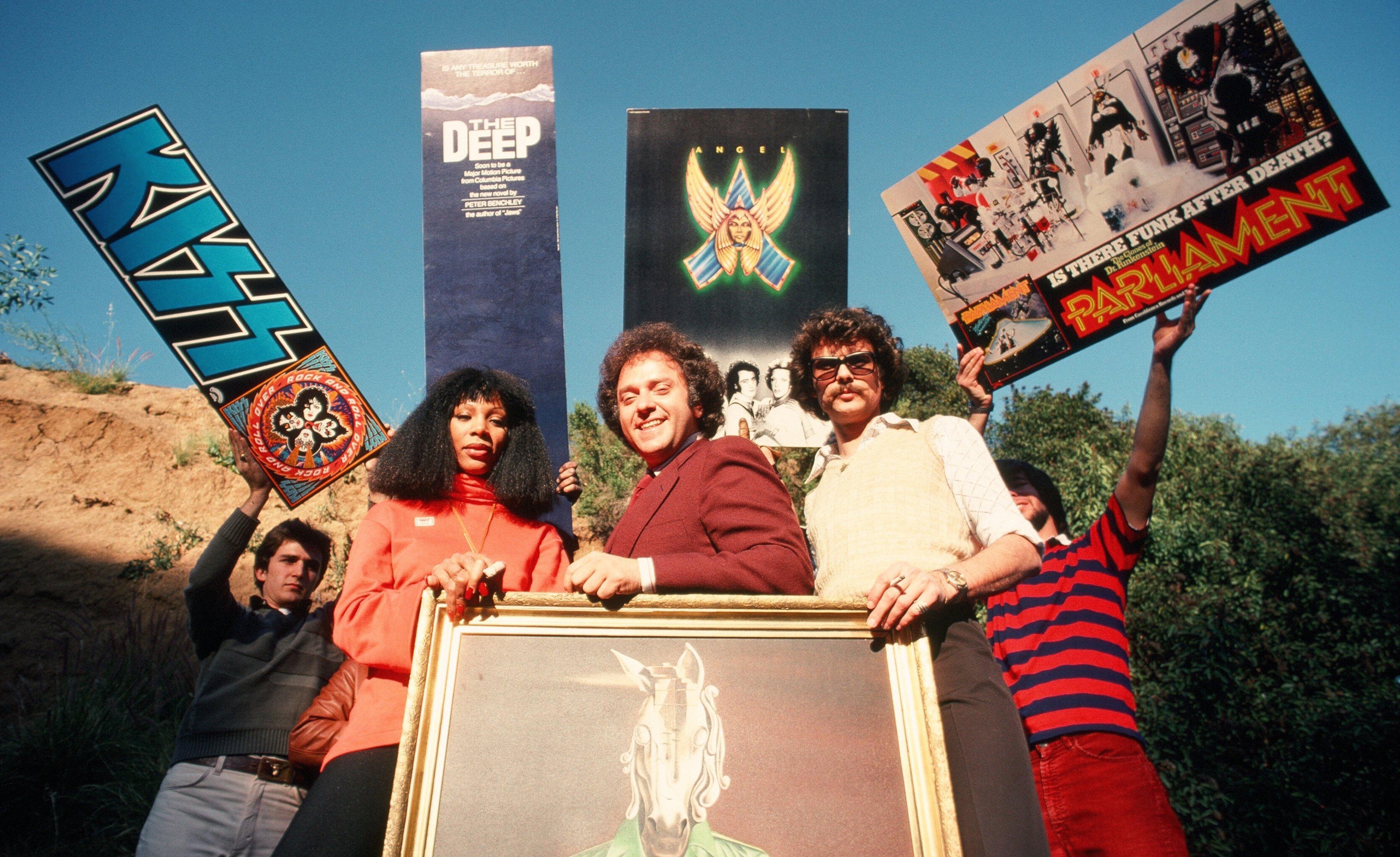The pandemic wreaked global havoc on many levels. Beyond the human toll, the disruptions brought on by the spread of COVID-19 caused deep and lasting damage to nearly every business sector, including live entertainment. Virtually overnight, workers lost their livelihoods, businesses closed their doors or drastically curtailed operations, and supply chains were hobbled.
Within days of lockdown, multiple outlets published sobering articles detailing the tours, concerts and festivals that had been affected by the outbreak; Insider.com article identified at least 170 postponements or cancellations. In a flash, every artist across the globe witnessed the live performance side of their careers vaporize. Crews were sent home, and all of the businesses that served the sector — logistics, audio gear, food service and more — found a barren landscape.
During the pandemic, major promoter Live Nation saw a drastic drop in the number of concerts and festivals under its banner: from over 40,000 events in 2019 to just over 8,000 in 2020. But by the end of 2022, Pollstar.com reported that the year’s top 100 tours sold approximately 59 million tickets — more than 2019's sales.
Three years after the beginning of the pandemic, life is in many ways returning to normal. Yet the costs associated with putting on a concert have risen dramatically, due to both the pandemic's inflationary pressures and a surge in demand for the goods and services necessary to sustain tours. For those working in and around the live music business, the "new normal" means some things work as they did before COVID-19 while others have altered radically — either temporarily or for good.
GRAMMY.com spoke with a cross section of industry professionals about some of the most profound changes, how they’re being addressed, and what it all might mean for the future.
New Touring Paradigms
With the return of live music has come a corresponding, pent-up surge in demand, notes Christy Castillo Butcher, Senior VP, Programming & Booking at the 70,000 seat SoFi Stadium in Inglewood, California. "To satiate that demand, you have to have a bigger venue."
In 2023 alone, SoFi Stadium is hosting several megashows: Billy Joel & Stevie Nicks, Grupo Firme, Romeo Santos, a five-night Taylor Swift residency, Metallica, Beyoncé, Ed Sheeran and P!nk are all on the venue’s calendar, with additional shows awaiting announcement. Madison Square Garden saw multiple sold-out performances by Janet Jackson, and will host a seven-night Phish residency.
Since the pandemic, some artists have taken different approaches to touring. Tandem tours and residencies are just two of the phenomena that seem to be increasing in popularity with touring artists and their management teams.
Teaming up for a tandem tour isn’t a new idea; package tours have been part of the concert landscape from the days of Dick Clark’s Caravan of Stars in the mid 1960s. And in an era when post-pandemic-related shortages and logistical snags make touring even more challenging, the practice is finding renewed interest.
One of the highest-profile tandem tours of 2023 is the ZZ Top/Lynyrd Skynyrd Sharp Dressed Simple Man tour. Visiting more than 22 cities across the U.S, the tour brings together three-time GRAMMY nominees ZZ Top with the popular Southern rock band.
"You want to give the fans the value of seeing two bands together," says Ross Schilling, Lynyrd Skynyrd's Tour Manager. (Pollstar reported an average ticket price for the top 100 North American tours in the first half of 2022 at more than $108. Meanwhile, ticket prices for megastars such as Beyoncé and Swift have reached astronomical levels.)
Schilling acknowledges that there are pros and cons for the artists as well. "You're sharing the expenses and the revenues," he notes, adding that the production is often halved. "Video, pyro, smoke, whatever kind of elements you want to add" can be shared on a tandem tour.
Read more: 5 Reasons Why Taylor Swift's Eras Tour Will Be The Most Legendary Of Her Generation
Another option experiencing a renaissance is the concert residency. "Residencies are not new, of course," says Phil Carson, a touring and management veteran who spent many years on the road with high-profile rock bands including Led Zeppelin, Bad Company, AC/DC and Yes. "They started with the likes of Frank Sinatra and Sammy Davis Jr. when there was really only one place to go: Las Vegas."
Today there are many more options, but the motivations are often the same as before. "Sammy, Dean Martin… all those guys wanted to hang out together, and didn't want to go on the bloody road," Carson explains. As their audiences grew older, they too were interested in the idea of going to one place to see their favorite performers.
And Carson thinks that the multi-night approach may well be part of a trend for the future. "We’re starting to get two-and three-night runs in casinos across America," he says. Adele, Bruno Mars, Maroon 5, Luke Bryan, Katy Perry, Carrie Underwood and Carlos Santana are just a few of the artists eschewing the road in favor of a series of dates in one venue.
The trend is extending to smaller venues as well. Singer/songwriter James McMutry and his band launched a residency at Austin' Continental Club in November 2021; that booking continues to the present day. And just last August, Robert Glasper announced a 48-show residency at the Blue Note Club in New York City; it’s his fourth extended run of dates at the famed jazz venue.
Festivals Return En Force
Following increased demand for live entertainment post-lockdown, major music festivals returned with a force in 2022 and continue to do so in 2023. Coachella and Lollapalooza were among the multi-day, multi-weekend events returning after COVID-forced cancellations, while mid-level events such as San Francisco's Outside Lands also saw over 220,000 attendees in 2022 — a major boon for a live music industry that had been in crisis only a year before.
Celebrating and featuring a multigenerational lineup of Latinx artists and performers, the Bésame Mucho Festival premiered in December 2022 at the 56,000 capacity Dodger Stadium. Tickets sold out within 70 minutes. The lineup for the 2023 event was announced in February; once again, the event sold out almost immediately.
Read more: Latin Music's Next Era: How New Festivals & Big Billings Have Helped Bring Reggaeton, New Corridos & More To The Masses
Ashley Capps has been wholly immersed in the festival scene; former head of AC Entertainment, for many years he oversaw the annual Bonnaroo Music and Arts Festival. These days he has scaled back his activities but still curates the adventurous Big Ears Festival which he founded in 2009 in Knoxville, Tennessee.
"The post-pandemic Big Ears has seen extraordinary growth," he says, noting a pre-COVID trajectory of growth, with an annual 20 percent increase in ticket sales. The 2022 Big Ears — the first after a two-year pause — experienced a 35 percent growth. "That led us to declare our first full-on sellout," he says, "five weeks before the festival happened."
In 2023, Big Ears noted another surge in ticket sales, surpassing 50 percent over the previous year. The multiple-venue festival added additional larger venues to accommodate the increased demand. Concertgoers "are certainly hungry to get back into the live music experience," Capps says. "And the artists we’re working with at Big Ears are eager to be back out and in front of appreciative audiences."
That pent-up demand on both sides of the equation can result in a crowded field, with many events — even beyond music — competing both for attention, staffing and gear.
The Cost Of Making Music
Global logistical bottlenecks that plagued every industry continue to take a toll on the live music industry. Worldwide economic inflation — which hit 8.8 percent in 2022, nearly doubling year-over-year, a partial result of the pandemic — has increased costs and cut profits, laying the groundwork for a "rocky road to recovery." Finding themselves without opportunities for work during the pandemic, untold numbers of skilled tour technicians left the business.
"People got out of the industry across the board, from musicians to agents to managers to bartenders to production staff," says Morgan Margolis, CEO/President of Knitting Factory Entertainment. "'I’ve got to do something else.' I saw a lot of that." Some never returned, causing a personnel shortage once live touring resumed.
All that affected live music venues, too. "We were shuffling around tour managers, production managers, box office personnel," says Margolis. He characterizes his company — active nationwide in venue operations, festivals, artist management, touring and more — as an "all hands on deck" operation. "I actually slung some drinks in Walla Walla at an Aaron Lewis concert," he says.
Increased costs mean it’s essential to run the leanest operation possible while maintaining quality. Margolis recalls the landscape when live music started coming back in 2022. "Vans and buses: everything was running out, even rental cars," he remembers. "And everything — generators, lighting rigs, staging rigs – was now 20-30 percent more expensive, because everybody was spread so thin."
But like many in the business, Margolis simply made the best of things. "Personally, I was excited to be on the ground again," he says. "I wanted to be around people."
After a nearly overwhelming surge of music artists getting back into live performance, he says that he is seeing a "more methodical" mindset taking hold. That compares to how he characterizes 2022: "Throw it all against the wall: we’re going everywhere!"
Read more: Beyond Coachella: 10 Smaller Festivals Beloved For Their Homegrown Vibes & Huge Lineups
Another new wrinkle: proposed rule changes by the United States Citizenship and Immigration Services (USCIS) would increase the costs to international musicians of obtaining a U.S. visa by as much as 260 percent. "The more these policies are made, the harder it is for us to share our music,” says Sampa the Great. The Zambian singer/songwriter and rapper notes that the proposed changes will hit independent artists especially hard: "Touring is the only way our music gets heard globally."
Such across-the-board cost increases can mean that some international artists have to have tough conversations. If not through touring, Sampa the Great wonders, "How else do we connect with the people who support our music? And how else do we independent artists sustain our careers making music?"
Schilling admits that during the worst of the shutdown, he thought about retiring — and so did one of his biggest clients. Skynyrd began a farewell tour in 2018, which was ultimately cut short by the pandemic, prompting serious soul searching. "When everyone’s livelihood was ripped out from under them, they decided 'We want to go out on our own terms.'" This year’s tandem tour with ZZ Top puts things right, Schilling adds.
That kind of thinking is widespread among the professionals who remain in the game post-COVID. From many working as venue owners to tour managers to crew to artists, the chance to get back on the road outweighs the challenges that they will inevitably encounter. There are many career paths easier than working in the live music industry, but few can compare with its rewards.
Changes Backstage And Post-Show
Before the pandemic, many touring artists arranged meet-and-greet sessions before or after their shows. They provided an opportunity for interaction between fans and artists, and represented an additional revenue stream for the artists. During the pandemic era, those sessions disappeared, even for the new shows that could still take place. Today, even while enforced social distancing has largely disappeared, the state of meet-and-greets is not what it was.
"My last three artists aren’t doing meet-and-greets, because there's still that concern of COVID," says David Norman, a longtime promoter, tour director, manager and accountant currently on tour with Evanescence; his past clients have included Prince, John Fogerty, Earth Wind & Fire, Green Day, Alicia Keys, Tyler, the Creator and many others.
Norman points out that his artists take a financial hit by eliminating the meet-and-greets. "But it’s better to be safe than sorry," he says, noting that a musician who tests positive for COVID can "shut down [performances] for weeks. Then you have to reroute [the tour], and refund money to people who aren’t able to come to rescheduled shows."
Others take a different approach. "Lynyrd Skynyrd will do meet-and-greets," says Schilling, adding that his team "wants to get back to as normal as we possibly can, as fast as we possibly can." André Cholmondeley is a musician, longtime tour manager and tech support professional who worked as guitar tech for Yes guitarist Steve Howe.
Before 2020, "if you bought the meet-and-greet package, you could shake their hands," he says. "There were lots of hugs and pictures." Now the experience involves more waving and fist-bumping. Foreigner, meanwhile, has recently swapped meet-and-greets for Q&A sessions. “Everybody has a great time, and the band is not bored with it because it's different every night," says Phil Carson, the band's Tour Manager.
Life away from the audience has changed, too.
"One major change across the board is the huge difference in catering," says Cholmondeley, who has recently toured with Pat Metheny and Ani DiFranco. Before COVID, touring artists and their crews would typically find a buffet backstage. "We order a lot more food now," Cholmondeley explains. "You get a couple of menus texted to you each day."
Carson notes that the band has found an alternative solution that works for them. "Our singer Kelly Hansen is a chef who won an episode of Food Network’s 'Chopped,'" he says with pride. "He's got a whole kitchen range on our tour bus. He makes breakfast, he makes tacos after the show."
Carson readily admits that such an approach stands in sharp contrast to rock‘n’roll road dining in the ‘70s. "Back then," he says with a hearty laugh, "it was a few lines of coke and a bottle of Jack Daniel’s!"
Bridging The Gap
Beginning in March 2020, the cancellations and disruptions brought upon by the pandemic reverberated throughout the live music industry. But as the business sector enters the third quarter of 2023, the focus is once again on the future, and guarded optimism is the prevailing perspective.
Festival season is officially underway, with Coachella wrapping up two weekends of massive-scale excitement, and a host of other events slated throughout the summer promising an active several months for touring musicians and crews. Taylor Swift's Eras tour is selling out fast, while Beyoncé's Renaissance tour has only just begun (to much fanfare, as expected). It seems as if touring as we once knew it is falling back into place.
Even with her focus on recording — she counts two albums, an EP, two mixtapes and nearly 30 singles — Sampa the Great emphasizes the appeal of live music for both audience and entertainer.
"Performing is the best way to connect with an audience," she says. "You're translating your music from audio to something visual, something physical. It bridges that gap from just hearing an artist or seeing them on social [media] to actually experiencing the artist."
TXT, Blackpink, Aespa & More: Here Are All The K-Pop Tours And Events You Can Catch This Summer




